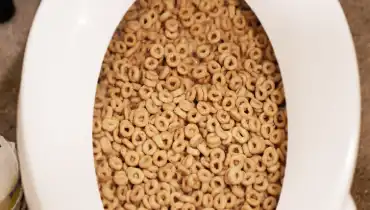Are You Permitted to Flush Food Down the Toilet?
Are You Permitted to Flush Food Down the Toilet?
Blog Article
Right here down the page you might get a bunch of really good answers with regards to What Can Happen If You Flush Food Down the Toilet?.

Introduction
Lots of people are typically confronted with the dilemma of what to do with food waste, particularly when it involves leftovers or scraps. One common concern that arises is whether it's fine to flush food down the toilet. In this short article, we'll explore the reasons that individuals might consider flushing food, the repercussions of doing so, and different approaches for appropriate disposal.
Reasons why people might think about flushing food
Absence of understanding
Some people might not understand the possible damage triggered by flushing food down the bathroom. They might mistakenly believe that it's a harmless technique.
Comfort
Purging food down the toilet may appear like a fast and very easy option to dealing with unwanted scraps, especially when there's no nearby trash bin available.
Negligence
Sometimes, people may merely pick to flush food out of large negligence, without taking into consideration the repercussions of their actions.
Consequences of flushing food down the commode
Ecological impact
Food waste that winds up in waterways can contribute to air pollution and damage marine ecological communities. In addition, the water used to flush food can stress water sources.
Plumbing issues
Purging food can bring about stopped up pipes and drains, creating expensive plumbing repair services and aggravations.
Kinds of food that should not be purged
Fibrous foods
Foods with coarse textures such as celery or corn husks can obtain entangled in pipelines and trigger obstructions.
Starchy foods
Starchy foods like pasta and rice can take in water and swell, bring about obstructions in pipelines.
Oils and fats
Greasy foods like bacon or cooking oils need to never be flushed down the commode as they can solidify and cause obstructions.
Appropriate disposal approaches for food waste
Using a garbage disposal
For homes furnished with waste disposal unit, food scraps can be ground up and flushed through the pipes system. Nonetheless, not all foods appropriate for disposal in this manner.
Recycling
Certain food packaging materials can be recycled, decreasing waste and minimizing ecological effect.
Composting
Composting is an environment-friendly way to get rid of food waste. Organic products can be composted and utilized to improve dirt for horticulture.
The value of proper waste administration
Reducing ecological injury
Proper waste administration techniques, such as composting and recycling, help minimize contamination and preserve natural deposits for future generations.
Protecting pipes systems
By staying clear of the technique of flushing food down the toilet, property owners can stop pricey pipes repair work and preserve the stability of their plumbing systems.
Final thought
To conclude, while it may be alluring to purge food down the commode for convenience, it is essential to understand the potential effects of this activity. By taking on appropriate waste management methods and taking care of food waste properly, individuals can contribute to healthier pipes systems and a cleaner atmosphere for all.
FLUSH FOOD DOWN THE TOILET?
FLUSHING FOOD CAN CAUSE BLOCKED DRAINS IN YOUR HOME
All of the plumbing fixtures in your home are connected to the same sewer pipe outside of your home. This outdoor sewer pipe is responsible for transporting all the wastewater from your home to the Council sewer mains. Even small pieces of food that go down the kitchen sink can cause problems for your sewer. It should therefore be obvious that flushing larger bits of food, such as meat, risks a clog in either the toilet itself or the sewer pipes. Flushing greasy food is even more problematic because oil coagulates when it cools, coating the interior lining of your pipes.
THE TOILET IS NOT A BIN
Food isn’t the only thing that people shouldn’t be flushing down the toilet. People use the toilet to dispose of all kinds of things such as tampons, makeup wipes, dental floss, kitty litter and even underwear. Water goes to great lengths to educate residents about the high costs and stress placed on wastewater treatment systems simply from people flushing the wrong stuff down the toilet. It costs taxpayers millions of dollars each year, and homeowners thousands in blocked drain repairs.
FLUSHING FOOD IS A WASTE OF WATER
Flushing food is a waste of our most precious resource - water. In June this year Level 1 water restrictions were introduced to protect water supply from drought conditions. Much of New South Wales continues to be affected by prolonged drought with recent figures revealing up to 97 per cent of the state remains in drought. Depending on whether you have a single or dual flush toilet, every single flush uses between five and 11 litres of water. In the current climate this is a huge amount of water to be wasting on flushing food that should be placed in the bin (or better yet, the compost).
https://www.jabplumbingsolutions.com.au/blog/can-you-flush-food-down-the-toilet

Do you enjoy more info about Flushing Food Down the Toilet?? Try leaving a remark below. We will be happy to find out your feelings about this page. In hopes to see you back again in the near future. Those who enjoyed reading our post please don't forget to pass it around. Thank you for your time invested reading it.
Call Today Report this page